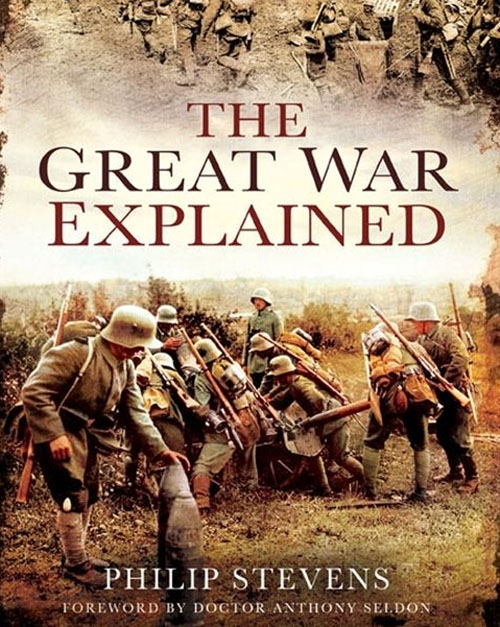The Great War Explained: A Simple Story and Guide

The Great War Explained: A Simple Story and Guide,
Philip Stevens, Pen and Sword Books, 2012, 222p, £19.99.
ISBN: 978-1-84884-764-4.
As we approach the centenary of the outbreak of The Great War in 1914, no doubt many books will appear on its causes and the events in it. This book is a good introduction into how the war came about and the battles that followed. The author, who was in the King's Shropshire Light Infantry for a time, has dedicated this work to his predecessors in that regiment and to the many thousands of men who died in that war and have no known grave. He has also taken many groups on tours to the battlefields in France. In response to many requests, he has developed this book to explain the complicated issues to a wider audience. It is worth recalling that the Great War proved to be such a shock to a world that considered itself civilised. Unlike previous wars, nearly every family in Britain was touched by it, as was the case with France and Germany. Early predictions of a short conflict proved wide of the mark and the war went on for over four years, killing and maiming hundreds of thousands, as the armies sought elusive victory. Stevens shows us how the war developed and concentrates on the Western Front in France. He often uses stories of individuals to illustrate the effects of the fighting. He states that he is not writing a detailed history of the war, but a general guide to what people see on the popular battlefield tours. He describes the key actions on the Front and their consequences. This makes a fascinating read for the general reader, as well as for the military historian. It is well illustrated with maps and contemporary photographs. Despite some expectation that interest in this war would have faded, especially since the veterans are now dead, it is clear that the centenary will be well remembered in the coming years. This war period is a key part of school history and tours to the battlefields remain well supported. As I have family members who died on the Somme and at Ypres, whose graves I have seen and having taught this period for many years, I can thoroughly recommend this work.

